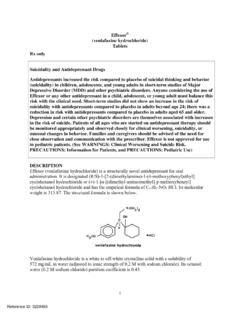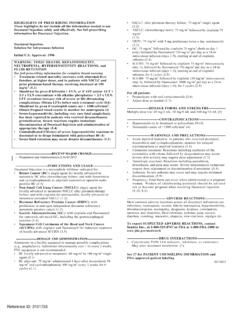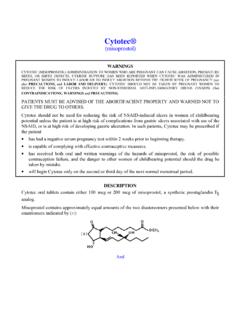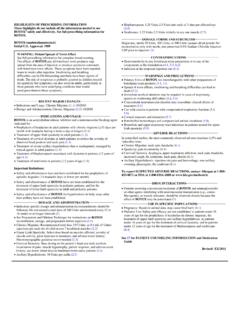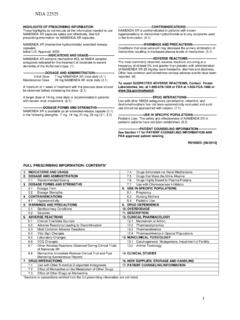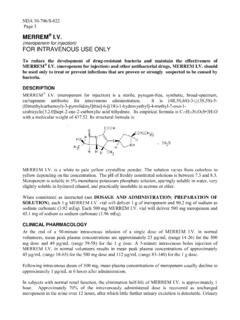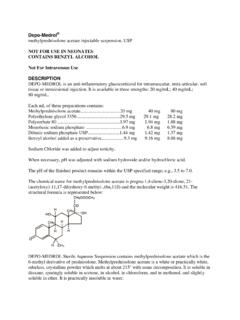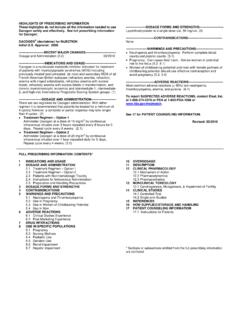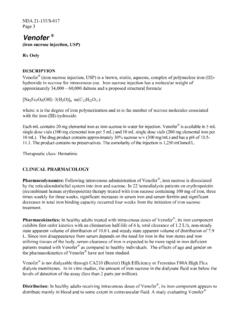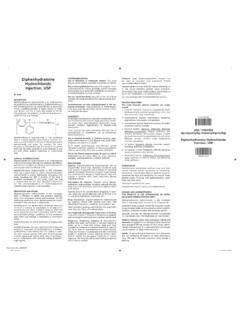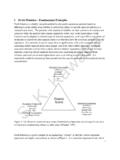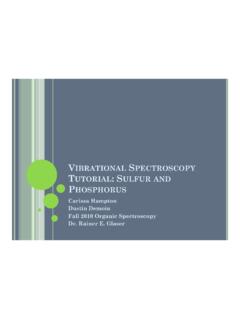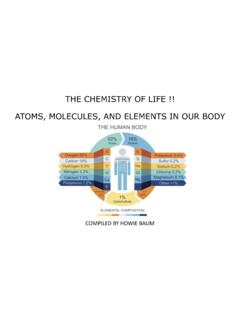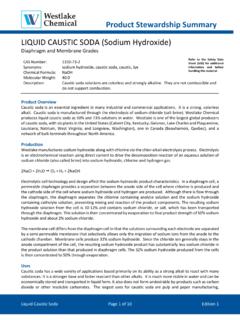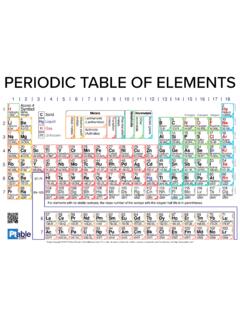Transcription of RETIN-A®
1 RETIN-A Cream Gel liquid (tretinoin) For Topical Use Only Prescribing Information Description: RETIN-A Gel, Cream, and liquid , containing tretinoin are used for the topical treatment of acne vulgaris. RETIN-A Gel contains tretinoin (retinoic acid, vitamin A acid) in either of two strengths, or by weight, in a gel vehicle of butyl alcohol, hydroxypropyl cellulose and alcohol (denatured with tert-butylated hydroxytoluene, and brucine sulfate) 90% w/w. RETIN-A (tretinoin) Cream contains tretinoin in either of three strengths, , , or by weight, in a hydrophilic cream vehicle of stearic acid, isopropyl myristate, polyoxyl 40 stearate, stearyl alcohol, xanthan gum, sorbic acid, butylated hydroxytoluene, and purified water.
2 RETIN-A liquid contains tretinoin by weight, polyethylene glycol 400, butylated hydroxytoluene and alcohol (denatured with tert-butyl alcohol and brucine sulfate) 55%. Chemically, tretinoin is all-trans-retinoic acid and has the following structure: Leave space for structure. Clinical Pharmacology: Although the exact mode of action of tretinoin is unknown, current evidence suggests that topical tretinoin decreases cohesiveness of follicular epithelial cells with decreased microcomedo formation. Additionally, tretinoin stimulates mitotic activity and increased turnover of follicular epithelial cells causing extrusion of the comedones.
3 Indications and Usage: RETIN-A is indicated for topical application in the treatment of acne vulgaris. The safety and efficacy of the long-term use of this product in the treatment of other disorders have not been established. Contraindications: Use of the product should be discontinued if hypersensitivity to any of the ingredients is noted. Warnings: GELS ARE FLAMMABLE. AVOID FIRE, FLAME OR SMOKING DURING USE. Keep out of reach of children. Keep tube tightly closed. Do not expose to heat or store at temperatures above 120 F (49 C).
4 Precautions: General: If a reaction suggesting sensitivity or chemical irritation occurs, use of the medication should be discontinued. Exposure to sunlight, including sunlamps, should be minimized during the use of RETIN-A, and patients with sunburn should be advised not to use the product until fully recovered because of heightened susceptibility to sunlight as a result of the use of tretinoin. Patients who may be required to have considerable sun exposure due to occupation and those with inherent sensitivity to the sun should exercise particular caution.
5 Use of sunscreen products and protective clothing over treated areas is recommended when exposure cannot be avoided. Weather extremes, such as wind or cold, also may be irritating to patients under treatment with tretinoin. RETIN-A (tretinoin) acne treatment should be kept away from the eyes, the mouth, angles of the nose, and mucous membranes. Topical use may induce severe local erythema and peeling at the site of application. If the degree of local irritation warrants, patients should be directed to use the medication less frequently, discontinue use temporarily, or discontinue use altogether.
6 Tretinoin has been reported to cause severe irritation on eczematous skin and should be used with utmost caution in patients with this condition. Drug Interactions: Concomitant topical medication, medicated or abrasive soaps and cleansers, soaps and cosmetics that have a strong drying effect, and products with high concentrations of alcohol, astringents, spices or lime should be used with caution because of possible interaction with tretinoin. Particular caution should be exercised in using preparations containing sulfur, resorcinol, or salicylic acid with RETIN-A.
7 It also is advisable to rest a patient s skin until the effects of such preparations subside before use of RETIN-A is begun. Carcinogenesis, Mutagenesis, Impairment to Fertility: In a 91-week dermal study in which CD-1 mice were administered and formulations of tretinoin, cutaneous squamous cell carcinomas and papillomas in the treatment area were observed in some female mice. A dose-related incidence of liver tumors in male mice was observed at those same doses. The maximum systemic doses associated with the administered and formulations are and mg/kg/day, respectively.
8 These doses are two and four times the maximum human systemic dose, when adjusted for total body surface area. The biological significance of these findings is not clear because they occurred at doses that exceeded the dermal maximally tolerated dose (MTD) of tretinoin and because they were within the background natural occurrence rate for these tumors in this strain of mice. There was no evidence of carcinogenic potential when mg/kg/day of tretinoin was administered topically to mice ( times the maximum human systemic dose, adjusted for total body surface area).
9 For purposes of comparisons of the animal exposure to systemic human exposure, the maximum human systemic dose is defined as 1 gram of RETIN-A applied daily to a 50 kg person ( mg tretinoin/kg body weight). Studies in hairless albino mice suggest that concurrent exposure to tretinoin may enhance the tumorigenic potential of carcinogenic doses of UVB and UVA light form a solar simulator. This effect has been confirmed in a later study in pigmented mice, and dark pigmentation did not overcome the enhancement of photocarcinogenesis by tretinoin.
10 Although the significance of these studies to humans is not clear, patients should minimize exposure to sunlight or artificial ultraviolet irradiation sources. The mutagenic potential of tretinoin was evaluated in the Ames assay and in the in vivo mouse micronucleus assay, both of which were negative. In dermal Segment I fertility studies of another tretinoin formulation in rats, slight (not statistically significant) decreases in sperm count and motility were seen at mg/kg/day (4 times the maximum human systemic dose adjusted for total body surface area), and slight (not statistically significant) increases in the number and percent of nonviable embryos in females treated with mg/kg/day (2 times the maximum human systemic dose adjusted for total body surface area) and above were observed.
